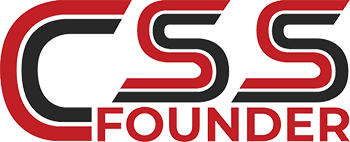Without a question, a great website can help your company expand. Making fantastic first impressions will assist you in increasing customer retention and generating more sales. We are all aware that websites are one of the most effective marketing tools available to companies.
Therefore, the is how much it will cost to create a website that meets your company’s needs.
Why is it Difficult to Estimate the Website Development Cost?
Why is it so difficult to calculate the website development cost? is the most common query we get from business owners throughout the world.
On the Internet, you may get rough estimates, but they ultimately don’t take into account all the complexities involved in building a website.
What will it cost to construct a website in 2023? Numerous factors will determine the answer.
But don’t worry; we’ve made it simple for you to calculate the price of website development. We’ll talk about a variety of components in this article that you’ll require for accurate calculation.
How Much Does It Cost to Build a website: The Estimations
According to studies, the typical price to design a website range from INR40,000 (for a website for a small business) to 2,50,000 and above (for a complex custom website).
In terms of the actual final cost, creating a website for a small business can cost less than INR 40,000 or more than INR 2,50,000.
The variety of factors affect how much a website will ultimately cost to construct. Let’s look at a few of the variables that influence the real cost of website construction.
Factors that Determine the Website Development Cost
Some of the significant factors that determine the average cost to build a custom website include:
- Factors by types and purpose
- Factors by phases
- Essential factors
Factors by Types and Purpose
Finding your website’s purpose is one of the first things you should do. A clear purpose will help you create a decent website design, which in turn will make it easier to achieve your main aim, which is to attract as many potential consumers as possible. Here are eight different categories of websites that are popular right now.
- Personal Website and Blog
You can think about using individual websites used as personal blogs static website design to give news and advice with your potential customers.
- Brochure
For small businesses, a brochure website that includes contact information, “About Us” page, and the ability to email requests or other calls to action is excellent (CTA).
A few web pages make up the website, which aims to draw in new clients and boost sales. However, some websites are designed to spread news and information.
- Corporate
Corporate websites attract visitors and communicate the company’s values to customers online. They are closely related to marketing objectives and must convey a company’s mission and highlight its portfolio.
- eCommerce
The website focuses on online payment exchanges for goods and services. The website is perfect for vendors who want to sell their wares online and is comparable to shops that sell to many customers or a compound platform.
- Educative
Websites of this kind are used by educational institutions or businesses that provide online courses.
- Web Portal
This category includes informational websites, which also provide emails, forums, search engines, and other online services
- Catalogue
Visitors looking for specific products or services including real estate, employment, lodging, vehicle rentals, and more should use this website. The websites provide feedback and rating systems, a directory, a robust search engine with location-based capabilities, and other features.
- Community Building Website
Usually, these websites are venues for themes. Examples from the past include Instagram, LinkedIn, and Facebook.
Factors by Phases
Before getting into the actual expenditures, we must first assess the various stages of constructing a website. We can only estimate their value after we know what components go into creating a website.
Let’s take a closer look at each of the variables.
User Interface and User Experience Design (UI/UX)
A beautiful website design is a success indicator for the good or service. Simply put, UI/UX design is extremely important to the success of your website.
What goes into creating a website that will appeal to potential customers? The steps in this technique are as follows:
- Researching
- Wireframing
- UI/UX designing
Front-End Development
Visitors to websites recognise the interface and initial visual touchpoint as the front-end. Design is the first step in the phase, which then includes QA testing.
The complexity of the animations and the responsiveness of the website are two cost-influencing elements in this stage.
Back-End Development
When the user has interacted with the visual website interface through buttons and other elements, the back-end comes into play. Any website’s back end, often known as the server side, is its heart and is in charge of its efficient operation.
The integration with third-party services, complicated queries, data processing duties, and other elements are the key cost determinants for this phase.
Content Management Systems (CMS) Development
Occasionally, you might want to write, edit, and manage the website’s content. Additionally, you shouldn’t contact engineers every time you wish to make a small adjustment.
For all of the aforementioned activities to be completed successfully, CMS software is required.
Essential Factors
Expenses associated with website creation are influenced by a wide range of additional crucial elements. Let’s take a moment to quickly review them.
- Domain Name
the distinct address that appears in your browser’s address bar.
- Website Hosting
a service that ensures online accessibility of your website.
- Maintenance
Website upkeep may maintain your website operational, including CMS updates, and fix website-related problems.
- SSL Certificate
An SSL certificate aids in giving consumers and web browsers the impression that your site is secure. Every year, SSL certificates must be renewed.








